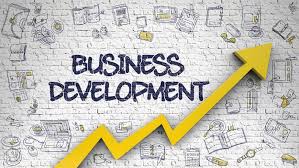Business development is the lifeblood of any organization, driving growth, innovation, and long-term success. It encompasses a wide range of activities aimed at creating value, expanding market reach, and building strategic partnerships. In today’s competitive landscape, businesses must prioritize development strategies to stay ahead. This article explores the key components of business development and how organizations can leverage them to achieve sustainable growth.
What is Business Development?
Business development is the process of identifying opportunities, building relationships, and implementing strategies to grow a business. It goes beyond sales and marketing, focusing on creating long-term value for the organization. This can include entering new markets, forming strategic alliances, launching new products, or improving operational efficiency. At its core, business development is about fostering growth through innovation and collaboration.
Key Components of Business Development
- Market Research and Analysis
Understanding the market is the foundation of business development. Conducting thorough research helps identify trends, customer needs, and competitive landscapes. Tools like SWOT analysis (Strengths, Weaknesses, Opportunities, Threats) and PEST analysis (Political, Economic, Social, Technological) provide valuable insights into market dynamics. By staying informed, businesses can make data-driven decisions and seize emerging opportunities. - Strategic Partnerships and Alliances
Collaborating with other organizations can unlock new growth avenues. Strategic partnerships allow businesses to pool resources, share expertise, and access new markets. For example, a tech startup might partner with a larger corporation to scale its product offerings. Building strong relationships with stakeholders, suppliers, and industry leaders is crucial for long-term success. - Sales and Marketing Alignment
Business development and sales go hand in hand. While business development focuses on creating opportunities, sales teams convert those opportunities into revenue. Aligning these functions ensures a seamless customer journey, from lead generation to closing deals. Effective communication and shared goals between teams are essential for maximizing results. - Innovation and Product Development
Staying competitive requires continuous innovation. Businesses must adapt to changing customer demands and technological advancements. Investing in research and development (R&D) can lead to new products, services, or processes that differentiate the company from competitors. For instance, companies like Apple and Tesla have thrived by prioritizing innovation. - Customer Relationship Management (CRM)
Building and maintaining strong customer relationships is a cornerstone of business development. A robust CRM system helps track customer interactions, preferences, and feedback. By understanding customer needs, businesses can tailor their offerings and improve customer satisfaction, leading to repeat business and referrals.
The Role of Leadership in Business Development
Effective leadership is critical for driving business development initiatives. Leaders must foster a culture of innovation, collaboration, and accountability. They should also empower their teams to take calculated risks and explore new opportunities. By setting clear goals and providing the necessary resources, leaders can inspire their organizations to achieve growth.
Challenges in Business Development
While business development offers immense potential, it is not without challenges. These include:
- Market Saturation: Competing in crowded markets requires differentiation and creativity.
- Resource Constraints: Limited budgets and manpower can hinder growth initiatives.
- Regulatory Hurdles: Navigating complex regulations can slow down expansion efforts.
- Cultural Differences: Entering global markets requires understanding and adapting to diverse cultures.
Conclusion
Business development is a multifaceted process that requires strategic planning, innovation, and collaboration. By focusing on market research, strategic partnerships, sales alignment, innovation, and customer relationships, businesses can unlock new growth opportunities and stay competitive. In an ever-evolving business landscape, organizations that prioritize development will not only survive but thrive. As the saying goes, “Growth is never by mere chance; it is the result of forces working together.” Embrace these forces, and your business will reach new heights.
 Universal Bloggers
Universal Bloggers



